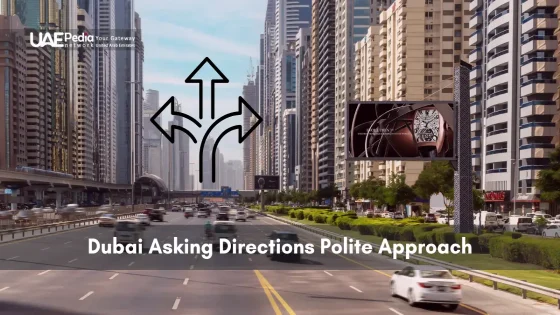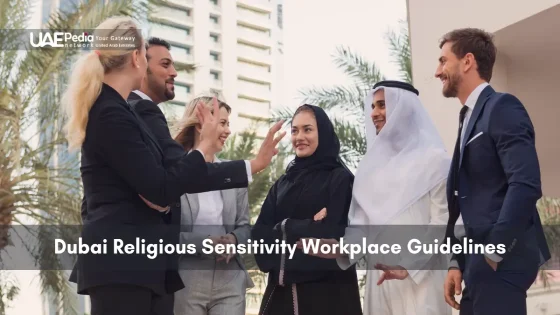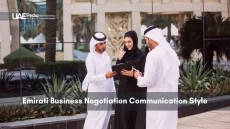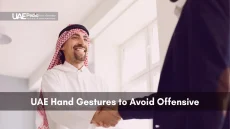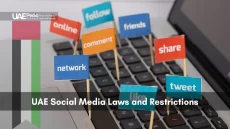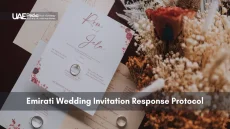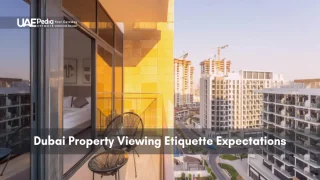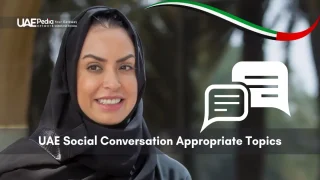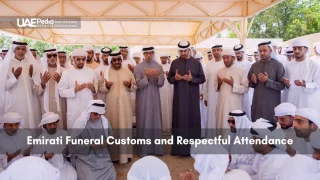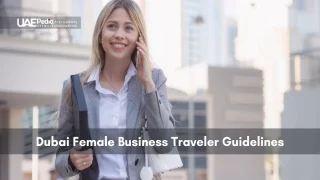Did you know 83% of travelers in the UAE’s busiest hubs hesitate before requesting help? This vibrant metropolis—where Bedouin hospitality meets AI-powered infrastructure—requires more than Google Maps to master. We’ve walked its sand-swept sidewalks and glass towers to craft your compass for respectful exploration.
Understanding local customs transforms simple interactions into cultural exchanges. A misplaced gesture or rushed question here might earn directions—but lose the chance to connect. Our team’s coffee-shop conversations with residents revealed golden rules: eye contact matters, patience opens doors, and a warm shukran (thank you) lingers longer than GPS coordinates.
This guide isn’t about memorizing phrases. It’s about decoding unspoken codes—when to remove sunglasses, how attire affects responses, why that mall employee’s nod means “follow me.” Consider these insights your golden ticket to moving through spaces like someone who belongs, not just visits.
UAE navigation hinges on cultural fluency: initiate queries with eye contact, right-hand gestures, and polite Arabic openers (“ʿafwan,” “min fadlak,” “shukran”). Maintain modest attire—knees/shoulders covered, loose fabrics—and observe gender spacing, palm-over-heart gratitude, and no sole-pointing.
Use Arabic-labeled maps, metro etiquette (stand right, women’s cabin), and peak-hour avoidance (7–9 am, 5–7 pm). During Ramadan align travel with prayer/iftar lulls; taxis and water taxis bypass congestion. Digital tools enhance but never replace respectful, patient interaction.
Key Takeaways:
- Cultural awareness transforms navigation into relationships.
- Use right hand for respectful exchanges.
- Learn essential Arabic directional navigation phrases.
- Dress modestly: cover shoulders and knees.
- Mirror local gestures for smooth interaction.
- Blend technology with cultural etiquette.
Mastering Dubai Asking Directions Polite Approach
Ever notice how locals here move through spaces with unspoken grace? It’s not just about knowing left from right—it’s understanding invisible social maps. We’ve decoded three golden rules that turn hesitant questions into meaningful exchanges.
Understanding the Core Principles
Start with eye contact and a slight smile—it’s universal currency here. Locals appreciate when visitors match their calm energy.
Pro tip: extend requests with your right hand palm-up, a subtle nod to regional etiquette.
- Pause before speaking—rushing signals disrespect
- Use “ʿafwan” (excuse me) like social lubricant
- End with “shukran”—it’s the period to every sentence
Embracing Local Sensitivities
That thumbs-up you love? Save it for video calls. Here’s why:
| Gesture | Western Use | Emirati Context |
|---|---|---|
| Open palm | Stop sign | Invitation to speak |
| Hand on heart | Romantic | Sincere gratitude |
| Pointing feet | Casual | Avoid completely |
Notice how men and women often stand at arm’s length during chats? Mirroring this space shows you respect local customs. Remember—every interaction here is less transaction, more tea ceremony. Slow down, and watch people become your living guidebooks.
Read More:
Understanding Local Dress Code and Customs
What’s the secret to blending in while standing out? Your wardrobe becomes a silent conversation starter here. In the UAE’s mix of corporate towers and traditional souks, clothing choices signal respect—or accidentally broadcast indifference. We’ve watched countless visitors pivot from “tourist” to “insider” by mastering these sartorial codes.
Women’s Attire and Modesty Tips
Think flowy fabrics meet boardroom chic. Knee-length skirts or tailored ankle-skimming trousers work best—pair with elbow-sleeve blouses for sun protection and cultural alignment. Pro tip: carry a lightweight scarf. It transforms spaghetti straps into mosque-ready outfits faster than you can say “shukran”.
Local friends swear by these rules:
- Sheer fabrics? Layer with a camisole.
- Deep necklines? Add a statement necklace.
- Beachwear? Strictly for resort pools.
Outside resort pools and private beaches, your clothing should cover shoulders and knees; sheer fabrics may be deemed inappropriate in public malls, souks, and transport hubs. Ref.: “United Arab Emirates Government (2023). Social responsibility – Visiting and exploring the UAE. Government of the UAE.”
Men’s Dress Guidelines for Professional Settings
Your suit’s lapel width matters less than its fit. Opt for crisp cotton shirts in desert heat—save open-toed shoes for private gatherings. That linen blazer? Perfect for client dinners, but swap shorts for tailored chinos when visiting government offices.
Watch for these subtle cues:
- Untucked shirts read “careless” in corporate zones.
- Visible undershirts scream “unprofessional”.
- Wrinkled fabrics suggest disregard for local customs.
Remember—what’s fashionable elsewhere might be considered unclean here. Shoulders and knees become “mute buttons” when visiting mosque entrances. Dress like you’re meeting someone’s grandmother, and you’ll navigate spaces with grace.
Leveraging Right Hand Etiquette in Daily Interactions
Ever wondered why coffee cups here seem to float into palms like magic? The secret lies in a cultural code older than skyscrapers. Mastering this unspoken rule transforms everyday exchanges into trust-building moments.
The Cultural Significance of the Right Hand
In social exchanges, your dominant hand becomes a character reference. Local friends often share stories of deals sealed simply by observing how someone passes documents. One business traveler recalled closing a contract faster after mirroring her Emirati partner’s right hand gesture when offering paperwork.
| Situation | Right Hand Use | Left Hand Use |
|---|---|---|
| Greeting someone | Handshake initiation | Avoid completely |
| Accepting gifts | Sign of respect | Considered rude |
| Eating meals | Standard practice | Cultural taboo |
Why this matters? Traditional practices designate the left for personal hygiene. Though modern facilities abound, the symbolic association remains strong. A shopkeeper once explained: “When tourists use both hands equally, we smile—but notice.”
Practical applications:
- Exchange business cards like precious items—right hand only
- Gesture toward landmarks with open palm facing upward
- Receive change at souks with intentional right-side focus
Adopting this practice isn’t about perfection. It’s showing awareness that resonates deeply. As one resident noted: “We don’t expect visitors to know everything—but effort writes its own welcome message.”
Using your left hand—especially when accepting money, handing over documents, or gesturing—can be interpreted as disrespectful and erode trust in social or business exchanges. Ref.: “Commisceo Global Consulting Ltd. (2022). UAE – Language, Culture, Etiquette and Business Practices.
Cultural Insights: Greetings and Body Language
Your first word here isn’t spoken—it’s written in the air with your palms. Greeting etiquette here acts as a cultural handshake, blending tradition with modern warmth. We’ve watched countless visitors turn awkward moments into genuine connections by mastering these silent dialects.
Proper Salutations
Start with “assalamu alaikum” (peace be upon you), even if your accent wobbles. Locals appreciate the effort—one resident told us: “When travelers try Arabic greetings, it’s like receiving a gift.” Handshakes often follow, but let elders initiate physical contact. Pro tip: Men greeting men may touch noses—don’t pull back, just mirror their energy.
“A smile here is currency. Pair it with the right words, and doors open.”
Key Hand Gestures and Their Meanings
Your fingers speak volumes here. Check this quick guide:
| Gesture | Common Use | Local Meaning |
|---|---|---|
| Expressing thanks | Deep respect | |
| Finger snap | Calling servers | Avoid completely |
| Open hand wave | Hailing taxis | Preferred method |
Notice how locals often gesture with their whole hand instead of pointing? Mimic this broad-sweeping motion when describing locations—it’s seen as more welcoming. And remember: feet soles facing someone? Worse than chewing gum mid-conversation.
- Greeting etiquette thrives on patience—wait for others to finish speaking.
- Hand gestures should flow naturally, not feel rehearsed.
- Observe interactions at spice markets for masterclasses in body language.
Initiating a handshake with an Emirati woman without her offering may go beyond discomfort—even run counter to cultural norms—and should be avoided unless invited. Ref.: “Rough Guides Editors (2025). Customs and etiquette in United Arab Emirates. Rough Guides.”
Essential Street Navigation and City Landmarks
Ever felt that thrill when a foreign street grid suddenly makes sense? Our team’s favorite navigation hack involves blending modern apps with timeless Arabic phrases. Locals often reference landmarks you won’t find on maps—knowing these cultural shortcuts turns confusing alleys into adventure trails.
Using Arabic Direction Phrases
Start with “yameen” (right) and “shimal” (left)—these directional twins unlock the city’s flow. When a vendor gestures toward “al maydan” (the square), you’re likely near a community hub. Pro tip: Combine “ayn al…” (where is…) with landmarks like “al bareed” (post office) for instant clarity.
“Visitors who try even basic Arabic phrases—they glow with different energy. We notice.”
Key reference points locals use:
- Al sariya: Streetlight (common meeting spot)
- Al hayy: Neighborhood (helps identify areas)
- Al murabba: Square (often near metro stations)
| Phrase | Meaning | Use Case |
|---|---|---|
| Hal yuwjad ma’lamun huna? | Is there a landmark here? | When maps fail |
| Ayna al matar? | Where’s the airport? | Urgent navigation |
| Al tariq ila…? | The way to…? | Starting journeys |
Notice how residents often point with their whole hand rather than fingers? Mirror this broad gesture when describing locations. Designated areas like Gold Souk or Creek Park become anchors in conversations—file these names mentally.
Three stress-reducers we’ve tested:
- Smile when saying “shukran”—it amplifies gratitude
- Carry a metro map as visual backup
- Note mosque minarets—they’re natural compasses
These phrases aren’t just translation exercises. They’re golden keys that transform “lost tourist” into “curious explorer.” Next time you’re disoriented, remember: every confused moment here is really an invitation to connect.
Asking for Directions: A Respectful Inquiry Strategy
Imagine standing at a crossroads where every gesture speaks louder than words. Here, seeking guidance blends cultural awareness with practical navigation. Let’s explore how to phrase requests and use body language that opens doors—literally.
Polite Phrasing and Non-Verbal Cues
Start with “Min fadlak” (please) paired with an open-palm gesture. Locals often respond warmly when visitors combine Arabic courtesies with patient body language. A shop owner in Deira once shared: “When tourists ask permission to inquire first, I’ll walk them halfway there myself.”
| Verbal Strategy | Non-Verbal Companion | Outcome |
|---|---|---|
| “Could you show me the way?” | Hands clasped at waist level | Signals humble request |
| “Is this route allowed?” | Brief eye contact + head tilt | Respects local laws |
| “Which direction leads to…” | Right hand sweeping motion | Aligns with cultural norms |
Language barriers melt when you point to map icons while using basic phrases. A resident recalled helping a lost traveler: “She mimed ‘train’ while saying ‘al metro’—we laughed, then I drew her a route.”
“Public spaces thrive on mutual respect. A gentle tone and relaxed posture tell us you value our time.”
Remember these quick tips:
- Pause 3 seconds after greeting before stating your need.
- Step back slightly if someone seems hurried.
- Nod while listening—it’s universal for “I understand”.
Connecting with Locals: Embracing Social Customs
Have you ever shared a smile that bridged languages? Social interactions here thrive on unspoken rhythms—where a nod can spark friendships and patience unlocks hidden gems. We’ve sipped karak chai with shopkeepers who’ve shared this truth: “Visitors who embrace our customs don’t just pass through—they leave footprints in our community.”
Building Rapport Through Shared Moments
Start by observing how people gather. Notice the careful distance between men and women in public spaces, or how elders receive first greetings. A university student told us: “When foreigners mirror our tea-sharing rituals, it feels like they’re saying ‘I see you’ without words.”
| Casual Exchange | Meaningful Connection |
|---|---|
| Quick directions given | Invitation to join family iftar |
| Basic Arabic phrases | Discussions about home traditions |
Three ways to deepen interactions:
- Attend neighborhood culture nights—arrive early, stay late
- Ask open questions about local holidays (“How does your family celebrate?”)
- Offer compliments on home decor when visiting—a cherished gesture
“We remember visitors who laugh at our jokes, not just follow rules. Joy is the real common language.”
Watch how residents handle gifts or adjust attire indoors. These subtle customs reveal more than guidebooks—they’re living lessons in respect. Your efforts to engage authentically? They ripple through markets, offices, and shared taxi rides long after you’ve found your way.
Planning Your Journey: Travel Time and Transportation Tips
What if your watch and the desert sun disagree on schedules? Timing your moves here requires more than clock-watching—it’s about syncing with cultural rhythms. Let’s explore how to glide through the city like sand through an hourglass.
Understanding Public Transit Nuances
The metro’s sleek carriages whisk you past traffic, but buses reveal hidden neighborhoods. Taxis? They’re your golden ticket when daylight hours fade. Pro tip: Water taxis along the Creek offer scenic shortcuts during rush time.
- Metro etiquette: Stand right, walk left on escalators
- Bus bonuses: Air-conditioned stops with digital timers
- Taxi hacks: Avoid 7-9 AM and 5-7 PM surges
| Transport | Peak Hours | Cultural Note |
|---|---|---|
| Metro | 7-9 AM | Separate cabins for women/children |
| Taxis | 5-7 PM | No food consumption inside |
| Buses | School hours | Priority seating for elders |
Managing Time During the Holy Month
Ramadan transforms the city’s pulse. Prayer times dictate traffic flows—leave extra minutes before iftar. A local resident shared: “We plan grocery runs around sunset, when streets briefly empty like hourglasses flipped.”
- Adjust meal breaks to match shorter daylight hours
- Respect laws about public eating/drinking
- Night markets buzz till 2 AM—sleep schedules shift
“During the holy month, patience becomes our compass. Delays aren’t obstacles—they’re reminders to breathe.”
Even though non‑Muslims are exempt from fasting, public consumption (including gum, water, or medicine) is legally prohibited during daylight hours in Ramadan—key context if scheduling breaks or hospitalities. turn0search34-1;Ref.: “United Arab Emirates Government (2023). Ramadan etiquette for non‑Muslims – Official UAE Portal.”
Enhancing the Experience with Modern Tools
What if your smartphone became a cultural compass? In the United Arab Emirates, tech-savvy travelers blend tradition with innovation. Digital tools here don’t replace human connections—they deepen them when used thoughtfully.
Unlocking Local Insights Through Tech
Switching Google Maps to Arabic reveals hidden gems. Street names appear in their authentic forms, like “شارع الشيخ زايد” instead of “Sheikh Zayed Road.” This simple change helps you recognize public transport announcements and match local pronunciation.
| English Setting | Arabic Setting Advantage |
|---|---|
| Generic landmarks | Neighborhood nicknames locals use |
| Western transliterations | Accurate Arabic spellings |
| Basic directions | Mosque/market proximity notes |
Three steps to optimize your map:
- Tap profile icon > Settings > Language
- Select “العربية” for full localization
- Enable “Place Names in Original Script”
A resident shared: “Tourists using Arabic maps spot souk entrances even drivers miss.” This approach respects the Arab Emirates’ linguistic heritage while leveraging modern convenience.
Pair these tech hacks with cultural awareness. Notice how locals hold phones in their right hand when showing screens? Mirror this gesture—it’s digital etiquette meets tradition. Your upgraded map becomes more than a tool—it’s a bridge to the Middle East’s heartbeat.
Check out the below:
Parting Thoughts on Embracing Dubai’s Unique Experience
Ever paused to watch sunlight dance between skyscrapers and sand dunes? This fusion defines the United Arab Emirates—where ancient trade routes meet AI-guided metros. Your journey here becomes richer when culture guides your compass.
Remember: flowing fabrics honor local etiquette in designated areas, while tech-savvy navigation reveals hidden souks. A hand-over-heart gesture speaks louder than perfect Arabic. During holy month, syncing with prayer times unlocks the city’s true rhythm.
The magic lies in balance—pack scarves alongside smartphones. Respect greeting etiquette when women and men mingle in public spaces. Let sunset calls to prayer remind you: every interaction here becomes a bridge between Middle East traditions and tomorrow’s innovations.
Now it’s your turn. Share stories of spice-market conversations or metro-ride discoveries. How will you blend timeless culture with modern wonder? Your next adventure awaits—step forward with curiosity, humility, and that trusty right hand ready to connect.
Modesty is key—opt for loose clothing covering shoulders, knees, and décolletage. Many mosques provide abayas (flowing robes) for visitors. Carry a scarf to drape over hair as a sign of respect during prayer times or holy site visits.
In Emirati culture, the left hand is traditionally associated with hygiene practices. Always offer gifts, handshakes, or pass items with your right hand to avoid unintentional offense—it’s a simple gesture that shows cultural awareness.
Light displays of affection like holding hands are generally tolerated in malls or tourist zones, but avoid overt intimacy. Save passionate embraces for private spaces—Dubai prioritizes discretion in public behavior to align with local values.
Start with a warm “As-salamu alaykum” (peace be upon you) and smile. Phrase requests as polite inquiries: “Could you kindly point me toward Burj Khalifa?” Avoid pointing feet or using abrupt gestures—subtle nods or open palms work better.
Yes! Avoid eating, drinking, or chewing gum in public during daylight hours. Dress extra conservatively, and lower music volumes. Many restaurants offer covered dining areas—look for “Iftar tents” at sunset for a communal breaking-of-fast experience.
Dubai Metro and buses are clean, air-conditioned, and efficient—especially along Sheikh Zayed Road. Download the RTA Dubai app for real-time updates. Taxis and Careem rideshares fill gaps, but always confirm pickup spots near landmarks like Mall of the Emirates.
Locals appreciate efforts to use basic terms! “Yameen” (right), “shimal” (left), and “alā tul” (straight) help with directions. Enable Arabic script in Google Maps—many street signs use both languages, making navigation smoother in areas like Deira or Al Fahidi.
